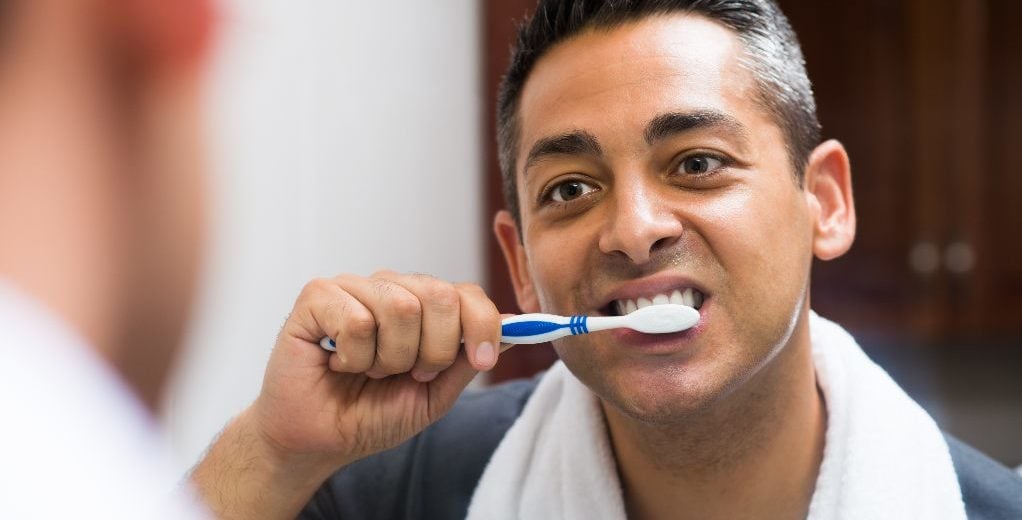Did you know that 9 out of 10 adults suffer from a major oral health problem that may be linked to the way we brush our teeth?
This may come as a surprise, considering we have been brushing our teeth all our lives!
An incorrect technique or mistakes in your oral hygiene routine could lead to plaque build-up, bleeding gums, stained teeth, bad breath and sensitivity.
So do you think you’re brushing your teeth properly? Ask yourself these 3 questions and find out.
Are you using the right toothbrush?
The kind of toothbrush you use matters a lot, since you use it for weeks together.
Soft, medium or hard bristled brushes
Contrary to popular belief, firm bristles could actually harm the gum tissue.
“The American Dental Association recommends soft bristled brushes but some people may prefer using medium bristled toothbrushes,” says Dr. Bindiya Bansal, Consultant, Dentistry at Sitaram Bhartia Hospital.
Besides just the texture, the size and shape of the toothbrush head also makes a difference.
Large toothbrush heads vs small toothbrush heads
Picking the right toothbrush can be difficult when you have many choices at hand.
“The key to ensuring that you reach even the furthest corners of your mouth is using a toothbrush with a smaller head that can be moved around with ease.”
Electric vs manual toothbrush
“You can use either an electric toothbrush or a manual one although people who have difficulty holding a toothbrush may benefit from using an electric version.”
How much time do you spend brushing your teeth?
The American Dental Association recommends brushing your teeth for 2 minutes 2 times a day.
If this seems like too much, try dividing your mouth into four sections (upper right, upper left, lower right, lower left) and brush each part for 30 seconds.
How do you brush your teeth?
Though vigorous brushing may seem like the right thing to do, it’s not. It could damage not just teeth but also gums in adults and children as young as 10 years.
Here’s what you should do instead.
Steps to Brush Your Teeth The Right Way
- Hold the brush at a 45 degree angle
- Move the brush in a back and forth motion until you clean the outer surfaces of the teeth
- Clean the inner surfaces of the front teeth by holding the toothbrush vertically and moving it in an up and down motion
- Don’t forget to brush your tongue to remove bacteria and prevent bad breath
- Spit out the excess toothpaste but don’t rinse with water right after brushing as it will wash away the fluoride in the remaining toothpaste and reduce its impact
Watch this video to understand the technique better.Remember to:
- Replace your toothbrush every 3 months or sooner if the bristles wear out
- Use a toothpaste that contains the right amount of fluoride
- Floss once a day
Spit out the excess toothpaste but don’t rinse with water right after brushing as it will wash away the fluoride in the remaining toothpaste and reduce its impact
Flossing is a must to clean the plaque and crevices that your toothbrush won’t reach.
How to floss:
Experts recommend flossing before brushing your teeth. Watch this video to learn how to floss or read below:
- Wrap about 12 to 18 inches (30 to 45cm) of floss firmly between the middle fingers of both hands
- Take about 1 inch of the floss and hold it between the thumb and forefinger of both hands; now insert it between your teeth and gently move it up and down to remove the food stuck between the teeth
- Do this about 8-10 times
Post- Meal Tips
- Avoid brushing your teeth right after you’ve eaten an acidic food or sugary drink. The acids weaken the tooth enamel and brushing too soon could erode the enamel.
- Don’t use mouthwash right after brushing as this removes the fluoride (in the toothpaste) that helps strengthen teeth and prevents cavities. You can use mouthwash after lunch provided you don’t eat or drink anything for half an hour after rinsing your mouth.
- Avoid using toothpicks to clear food particles between your teeth as this could damage your gums and cause an infection.
Improve Oral Hygiene to Improve Overall Health
Brushing is one way of maintaining oral hygiene and is key to eliminating harmful bacteria.
Oral bacteria that spreads to the heart may cause cardiovascular disease and pneumonia if it reaches the lungs. Severe gum disease may even cause complications during childbirth.
In addition to improving your brushing technique, increase your water intake and decrease consumption of fatty and sugary foods.
When to see a dentist
Instead of approaching a dentist only when you get a numbing toothache or piercing pain due to sensitive teeth, try to schedule a dental screen to understand if there’s any action that you can take now.
People who smoke, have diabetes or gum disease should see a dentist at least every three months.
“It’s never too early to see a dentist, but if you don’t make an effort soon enough, it may end up being a tad bit late,” cautions Dr. Bindiya.
More Resources:
Dental Caries in Children: Why You Should Start Cleaning Your Child’s Teeth Early

